PRESERVING A MILITARY LEGACY FOR FUTURE GENERATIONS
The following Reflections represents SSgt William Randolph’s legacy of his military service from 1974 to 1987. If you are a Veteran, consider preserving a record of your own military service, including your memories and photographs, on Togetherweserved.com (TWS), the leading archive of living military history. The following Service Reflections is an easy-to-complete self-interview, located on your TWS Military Service Page, which enables you to remember key people and events from your military service and the impact they made on your life. Start recording your own Military Memories HERE.
Please describe who or what influenced your decision to join the Air Force.

My father was the greatest influence on my life and the primary reason I joined the Air Force in April 1974, even before I graduated from high school. I grew up in an Air Force family. I was born at Hunter AFB, Savannah, GA, in 1955, and we moved seven times to various bases before my father medically retired in 1968. My father had just reenlisted in 1967 while stationed at Da Nang AB, Vietnam, and had planned on staying in to reach at least 25 years. My dad was also a great advocate and recruiter for the Air Force. Not only did he influence my older brother and me to join the Air Force, but he also influenced three of our friends to enlist. Two attended basic training with me. In the case of my youngest brother, he joined the Navy.
My freshman year of high school reinforced my decision to join the Air Force. I have always been interested in being an aircraft mechanic in the Air Force. I studied Auto Mechanics in high school, and during my senior year, my auto mechanics teacher, Mr. McDonald, secured an internship for me with the Aviation Department at Radiation Inc. I was under the guidance of Chief Pilot Roby J. Green, a Licensed A&P Mechanic. The company flew a Learjet 23 and an Aero Commander. I learned both aerodynamic theory and aircraft systems through studying aviation textbooks and reading the technical manuals for both planes. Part of the day, Roby tested me on the knowledge I had gained from the books, and the other part was spent gaining practical, hands-on experience by completing general maintenance tasks for both aircraft. I also interacted daily with the five other corporate pilots, one of whom was a retired Air Force fighter pilot, Willard Van Dusen, a Major USAF Retired, who always reflected highly on the Air Force and its mission.
Whether you were in the service for several years or as a career, please describe the direction or path you took. Where did you go to basic training, and to what units, bases, or squadrons were you assigned? What was your reason for leaving?
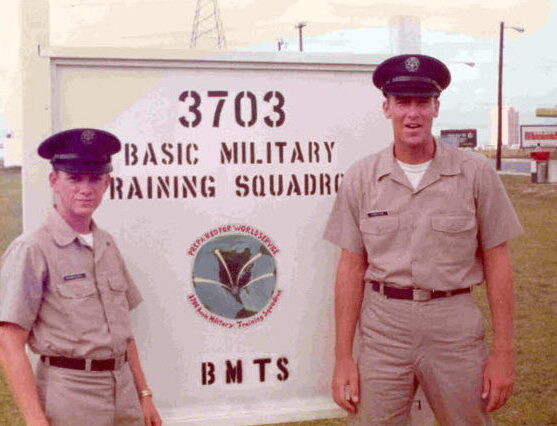
I enlisted with the USAF Reserve from April 16 to August 26 during my senior year in high school and was honorably discharged to enter active duty on August 27. Basic Training Class was dubbed the Sunshine Express Flight: Squadron 3703, Flight 0968, Training Instructor (TI) SSGT Hardison. We began on August 2 August 27and graduated on October 10
The Sunshine Express Flight consisted of 48 airmen from the eastern, central, and northern parts of the state of Florida. As far as I know, this is the first time an entire basic training flight was from the same state and not comprised of individuals from around the US. Two airmen in my Squadron, Kerry Davis and Robert Demers, graduated from Eau Gallie High School in Melbourne, Florida, with me.
From basic, I received a Special Order AA-150, which assigned me to Chanute AFB, IL, and the 3369 Student Squadron, Class 741016. I was required to report by October 12 with a projected graduation date on January 14. The course was Aircraft Maintenance Specialist AFSC 43152: Airlift & Bombardment Aircraft – Jet Over Two Engines. The class worked with training modules from the B-52 Bomber for hands-on learning. Nine students were assigned to the class, of whom four of us were from Florida and graduated Basic Training together. Three classmates were from Omaha, Nebraska, and enlisted under the buddy system. These three also received orders to Norton AFB, CA, and were assigned to the flight line as crew chiefs with me.
NORTON AFB, CA
My first assignment was at Norton Air Force Base, San Bernardino, CA, with the 63rd Military Airlift Wing. As a Crew Chief with the 63rd Organizational Maintenance Squadron (OMS), I was assigned to the Flight Line – A Flight. We maintained 20 Lockheed C-141A Starlifter aircraft. I worked primarily mid-shift. As a newly minted Airman and Crew Chief, I attended the Field Training Detachment Aircraft Maintenance Technician Course for the C-141A.
During my time at Norton, I served as a flight line crew chief, responsible for launching and recovering mission aircraft, performing pre-flight and post-flight inspections, troubleshooting and repairing general aircraft systems, and coordinating with specialists to address their specific system issues. I generally serviced engines, fuel tanks, hydraulic and pneumatic systems, LOX, tires, lubricated main and nose gear, and T-tail components. We removed access panels, opened the engine cowlings to allow specialists to access internal components, and opened and closed cargo doors and ramps as needed. We were trained to operate several pieces of ground support equipment that provide external electrical power and hydraulic pressure. We towed the aircraft, performed jacking to test the landing gear functions, and worked with aircrews to ensure the plane was in flight-ready status.
During my last six months of duty at Norton, I was preflighted to supervise a small four-person preflight team to improve takeoff reliability at the base. Myself, along with an engine mechanic, an avionics specialist, and a hydraulic specialist, reported to work at 1600 hours. Maintenance Control provided me with a list of mission-scheduled aircraft for the preflight. The team performed an aircrew-1 preflight on all of the aircraft. Additionally, we ran the aircraft engines to ensure the systems were within tolerance and powered the internal electrical, pneumatic, and hydraulic systems. We focused on detecting defects that would ground an aircraft or delay takeoff. Through our efforts, the batakeoffkeoff reliability rating climbed to above 90 percent. The Department of the Air Force (Special Order GB-015) recognized the 63rd MAW with an Outstanding Unit Award for the period of June 1, 1978, to May 31, May 31
After four years, I decided to separate and attend college. It wasn’t on my radar after high school, but as I met various other airmen and professionals at the base, I decided it was time to try to utilize my GI Bill to pursue higher education. My thought was to return to Florida and enroll to seek a degree in engineering. The enrolling part worked, but the engineering curriculum didn?t. I found that my math gene was lacking, while my English and history genes were much stronger. I had loved photography as a teen, and I decided to change my major to Photojournalism. I graduated with a Bachelor of Science in Journalism from the University of Florida (UF) in December 1982.
While at the University, I considered joining the Air Force ROTC. As I talked with the ROTC unit’s NCOIC, I learned that UF was interested in graduating pilots and that my age worked against me. I wouldn’t graduate before I turned 28. The next setback was graduating in the middle of a recession. Several of my classmates and I were in line behind out-of-work photographers attending the 1982 National Press Photographers Association (NPPA) conference in Jacksonville, FL. I decided to reenlist in the Air Force with hopes of attending Officer Training School (OTS).
ALTUS AFB, OK
It was like I had never left. I was awarded my previous rank of E-4 and AFSC 43153. My job as a crew chief was waiting for me at a new assignment. My orders sent me to Altus Air Force Base, OK, and the 443rd Military Airlift Wing. The base was in the southwest part of the state, just 15 miles north of the Texas State line. C-141B and C5A pilot training was located at Altus, as well as Flight Engineer training. I was assigned to the 443rd OMS for the first two years as a flight line crew chief. I attended a field detachment course to refresh my knowledge of the C-141, but most everything came back to me quickly. The main difference is that when I left in 1978, the planes were A-model aircraft, and now they are B-model aircraft. The fuselage was stretched 23 feet, and aerial refueling had been installed. Within a few months, all of my required training was completed, and I was once again capable of working on the aircraft as a 5-level. I was sent to engine run school and was qualified to run the four-engine jet for ground tests.
In late 1983, as the assigned Crew Chief of 60 Squadron, the squadron recognized my crew with the Outstanding Team of the month and quarter awards. In early 1984, Capt. Rick Carter submitted a letter of appreciation to my commander for my efforts to get his mission off on time. Numerous maintenance issues croppepreflightircraft 60-201 during the aircrew-1 preflight. Though it was not my assigned aircraft, I still jumped in and began working on issues that both flight engineers discovered. I was able to complete minor and major repairs, as well as coordinate specialist work, promptly. Several Red X conditions were cleared for an on-time takeoff. In the third quarter of 1984, I was selected as NCO of the Quarter Squadron, and my Squadron nominated me for the prestigious 12 Outstanding Airman of the Year award.
In my off-duty time, I worked to establish the Altus Bicycle Club for military personnel and civilians. We organized weekly rides and participated in regional rides and races. I also served as squadron photographer and provided wedding photography for young 443 OMS personnel. I entered and won numerous Air Force Photography awards at the base, command, and Air Force levels.
At this point, my focus was on being a good NCO and applying and being selected for OTS. I began the application process in December 1983 and completed the AFOQT by January 4. Concurrently, I was enrolled in a Master of Arts Degree program and had completed one semester. The application package included endorsements from the squadron commander and the wing commander. My APRs were perfect and again had complete wing endorsement. The package was on its way by February. After six months, and still no word. I asked my commander if there was any way to inquire. The staff at Randolph AFB finally answered that they couldn’t find the package. Another month expired, and finally, I had a reply; they found it behind the desk of a clerk who had transferred out.
To be considered, I would have to resubmit a new package. By now, I had been promoted to SSGT and was close to finishing my MA Degree from Webster University. I was scheduled to retake the AFOQT and began to submit the package in early 1985. Another snag in the process. CBPO informed me that I would need an age waiver because I would not be eligible for commissioning by my 30th birthday. I applied and was denied. Peace-time forces were holding slots for only those who met specific promotion criteria, such as SSGT with less than five years of service. I missed the first promotion cycle in October 1983 by 0.43 points, which would have made me eligible for the promotion. In the next cycle in May 1984, I had a line number of 59 out of 220 selected. However, it was outside the criteria for a waiver.
This didn’t change my attitude toward being an example of what an NCO should be. In the first part of 1985, I was approached by TSGT Zane Winters of the MAW/MAQ section, who typically conducted my proficiency evaluations while working as a crew chief. I had always received excellent reviews during my evaluations as a crew chief. TSGT Winters wanted to know if I would be interested in a transfer to his office as an Aircraft Inspector. I interviewed with Capt. Lyle L. Montague, Quality Control Officer, and SMSGT Charles M. Newton, Quality Assurance Superintendent, as well as Lt. Colonel John B. Liegl, Deputy Commander of Aircraft Maintenance. The only requirement they had was that I had to pass my 7-Level CDC course before I transferred to their office. I completed the course in record time with a passing score of 93 and was awarded a three-day pass by Lt. Col. George Strayhorne, 443rd OMS Commander.
As an Aircraft Inspector, my duties were wide-ranging. My primary focus was ensuring that aircraft maintenance personnel complied with the technical orders used to complete the servicing and maintenance of both C-5A and C-141B aircraft. I conducted personnel evaluations, monitored flightline safety, and prepared reports on all findings. Additional duties assigned to me included serving as administrator of the functional check flight program, conducting investigations into bird strikes and minor aircraft and personnel accidents, and being a member of the Aerial Delivery Malfunction/Incident Review Board. I was also a member of the C-5B acceptance team at Altus Air Force Base. After the C-5A crashed in Saigon, Vietnam, the rear cargo door was bolted down and not used. Lockheed completed modifications and upgrades to the aircraft. The first one rolled off the production line in 1987 and was delivered to Altus Air Force Base, OK. We spent weeks reviewing every system and presenting our findings to the Deputy Commander for Maintenance.
On December 13, 1985, the Military Airlift Command Maintenance Standardization and Evaluation Team (MSET) descended on Altus AFB. Our office served as the primary interface with the inspection team and the maintenance squadrons. I was singled out as one of the inspectors who went above and beyond to ensure the MSET team worked efficiently and effectively during their visit. The wing received an Excellence award from the MSET staff. The Department of the Air Force recognized (Special Order GB-127) with an Outstanding Unit Award from July 1 to June 30.
If you participated in any military operations, including combat, humanitarian and peacekeeping operations, please describe those which made a lasting impact on you and, if life-changing, in what way?

Operation Frequent Wind and Baby Lift. During the third month that I was stationed at Norton AFB, April 1975, we were engaged in supporting “Operation Baby Lift and Frequent Wind,” the evacuation of military personnel and civilians from South Vietnam. Throughout the entire month, our normal contingency of 60 aircraft continually flew in and out of Norton, except for the three canary birds we used for spare parts. While there were 201 missions completed by C-141A aircraft in/out of Vietnam, there were many more transporting Vietnamese refugees to their new homes throughout the United States. Many of the squadron members were sent TDY to receiving bases to provide maintenance support for the missions, while at Norton, we operated with reduced manpower. As the C-141A aircraft assigned to A-Flight landed, our crew of Crew Chiefs completed post-flight inspections and, in most cases, removed the entire center floor running the length of the cargo compartment, allowing us to wash the aircraft’s belly out. The refugees being brought to the states urinated and defecated in the cargo compartment during their long flights. It required extensive manpower to prevent possible corrosion of the aircraft structure. Once the flooring was reinstalled and pre-flight checks completed, we performed servicing and pre-flights to prepare the planes for the next mission.
Exercise Brave Shield XV. From the first part of September to October 1976, I participated in a Forward Base Operation at Eglin AFB, FL. The exercise involved the movement of Army Troops and equipment from various locations in the US to the swamps near Eglin AFB. Our team from Norton set up an operation space in a remote area at the end of the main runway to receive, inspect, and perform maintenance on C-141A aircraft. There were 20 maintenance personnel from Norton, plus a loading specialist. The Army troops and equipment arrived at Eglin for three weeks and were subsequently offloaded. They formed convoys and headed out to conduct field maneuvers. The last three weeks were reversed. Other than minor repairs, we weren’t permitted to handle major maintenance problems. Those aircraft were flown to Charleston Air Force Base, SC.
We were scheduled to leave on the last aircraft when the Center Wing Fuel Transfer Valve wouldn’t work. This critical valve allowed fuel to transfer from one wing to the other. We performed the standard troubleshooting as outlined in the technical manuals. Nothing worked. The Red-X condition had to be fixed before we could refuel or take off. We removed the oval access panel on top of the aircraft, and I descended into the wing cavity and located the valve. No visual defect was noted in the valve. As the Flight Engineer cycled the valve from his control panel, I could hear the valve trying to actuate. Since the valve could be manually opened and closed, I decided to perform that procedure. I cycled the valve open and closed several times. Then I requested the FE to try it again with the panel switch, and it worked. Once the aircraft was refueled and the valve continued to work, we installed the panel and prepared to depart Eglin.
Exercise Team Spirit. March 15, 1977, I received orders for a 45-day temporary duty (TDY) to support “Exercise Team Spirit.” Our orders routed us from Norton to Hickam (overnight stay), to Kwajalein (refueling), to Anderson AFB, Guam (5 days), to Kadena AFB, Okinawa (7 days), to Yechon AB, Korea. Our six-member team was heading to Yechon, Korea, to support C-141A aircraft tasked with supplying equipment and supplies to the Marines at the remote airfield. We were sent to pick up necessary equipment, including half of a pup tent, a field pack, arctic gear, a helmet, and a down sleeping bag.
Upon arrival at the Norton AFB terminal the next day, we checked in at the departure desk only to find out we weren’t assigned a flight. Six other squadrons of the Squadron were on the manifest and departed in our place. We were assigned another flight. We spent the first two weeks in the system without a specific assignment. While at Kadena AFB, Okinawa, the command identified a need for us at Yakota AB, Japan. However, when we arrived, the Squadron had no idea we were coming. The CO blended us into his swing and midnight shift for 30 days. Preflight duties included completing post- and pre-flight inspections, refueling, and minor maintenance tasks such as tire changes.
RED FLAG SUPPORT, NELLIS AFB, NV As a member of the 63rd OMS Mobility Team, I was at the ready to deploy on a moment’s notice. Typically, it meant we arrived, had our records screened for accuracy and updates, boarded a bus to an aircraft, taxied to the end of the runway, and then returned to the parking spot. On one occasion, an alert was called, and I reported to the base mobility command for processing. I heard that we were getting deployed this time. Some doubted me; however, we taxied out to the runway this time, and the pilot pushed the throttles forward. Within seconds, we were airborne. We landed an hour later at Nellis AFB, NV, to support “Red Flag” for a week.
One day during the deployment, my two other colleagues and I were dispatched to McCarran Airport and told to report at a specific gate. We were there to recover a C-141 aircraft coming in from Canada with top-secret cargo. We were instructed to marshal the plane to the spot but were told not to board until all the cargo had been removed. The cargo doors were opened by a load master, a fully enclosed truck backed up, and then the pallets were pushed into the car, and off they drove. Later, we learned through the local news that it was the remains of a satellite being returned to Area 51. We performed our routine post-flight inspections, serviced the aircraft, and assisted the flight crew in its departure.
C-141A Aircraft 64-0614 Quick Fix Team. In late October 1977, I was working the evening shift as a Supervisor for A-Flight when a message came in regarding 64-0614 and the extensive damage it incurred during takeoff from Richmond RAAF, Australia. The aircraft was assigned to our flight, and therefore, a team was being assembled to travel to Australia to recover it. I was sent as the primary Crew Chief.
On takeoff, the aircraft was on climb-out. At approximately 700 feet, the number three engine turbine failed, and the almost 500 lb. right cowling blew off and landed in the front yard of a nearby home. Some shrapnel from the turbine peppered the neighborhood below. A large portion entered the cargo bay, igniting cargo, and the other half entered the number four engine, resulting in a complete failure. It was the first time a C-141 was flown with two operational engines on the same wing. The “May Day” was answered by an Australian C-130 on final approach. The C-130 pilot successfully guided the damaged aircraft back onto the runway and safely landed.
Our Quick Fix Team consisted of a 16-member maintenance team from Norton AFB, with instructions to repair the aircraft and return it to service within 45 days. It required us to transport all the support equipment, including wing and nose jacks, hydraulic jacking manifolds, engine stands, flight control rigging kits, and a wide range of spare parts. Later flights brought us four new engines, all new tires and brake assemblies, and new troop compartment LOX Convertors, as well as other components we requested. Regardless of your specialty, we employed a CAM approach, and everyone assisted one another in the repair.
Our team patched large holes in five sections of the right-wing leading edge, a large scab patch was fabricated for a gash in fuselage above and below the floor line, and landing gear pod panels were patched; we removed and replaced all four engines as well as the number three and four wing engine pylons; remove and replace all main landing gear brakes, tires and associated hydraulic components; removal and replacement of the troop compartment LOX convertors, and replacement of all impacted avionics equipmecheckoutinal checkout efforts consisted of jacking the aircraft to evaluate and configure the extension and retraction of the main and nose gear. The new engines were run to check out the hydraulic systems and ensure each engine was operating within the approved tolerance. During the engine run-up, we pressurized the aircraft to ensure the fuselage patches remained in place. The incident was profiled in the September 1978 Airman Magazine.
Did you encounter a situation during your military service when you believed there was a possibility you might not survive? Please describe what happened and what the outcome was.

There wasn’t a situation that I didn’t think I would survive. However, there were times when incidents happened. We were working on the flightline at Norton, and our aircraft was parked near the perimeter fence line. Outside the fence was a perimeter road, and on the other side was the base’s main wall. One night, someone was upset that we powered up the engines to complete testing after repairs. He began shooting from outside the base toward the flightline. We were in our maintenance truck and stood up to see where the shots were coming from. He probably fired five times, then jumped back in his vehicle and pulled off. Afterward, the team completed a thorough inspection of the fuselage and T-Tail to ensure there were no bullet holes.
Another time, we found ourselves in a similar situation when we discovered helium balloons with fake sticks of dynamite floating near our aircraft. Both times, the Security Police were notified. They investigated without any results.
Of all your duty stations or assignments, which one do you have fondest memories of and why? Which one was your least favorite?

The assignment to Australia was my favorite. As a small team, we had a specific mission and time frame to complete it. We employed the Consolidated Aircraft Maintenance Squadron (CAMS) approach to accomplish our mission. Every team member chipped in to help one another, regardless of their individual specialty. For example, the supply guy was assisting the sheet metal specialist in patching the multiple holes on the right side of the fuselage. The hydraulic specialist was removing thousands of screws to remove the centerline floor of the cargo compartment. Our only engine stand broke the first week, but as a team, we figured out how to fix it, allowing us to change the four TF-33 engines. We changed the number three and four engine pylons. Again, we were told it had never been done outside the Georgia aircraft depot. The RAAF host, Squadron 486, provided any support it could in the form of facilities, materials, and recreation. Several of their airmen took us home for dinner or a weekend water ski and camping trip. One of their members took about six of us on a day-long journey in the outback where we saw wild Kangaroos and historic sites.
From your entire military service, describe any memories you still reflect on to this day.

The eight most influential years of my life were in the Air Force. There are so many memories that I reflect on continually: memories of the men and women I served with, the training and discipline that mold you into a tight-knit unit, the challenges of a harsh working environment that strengthen your confidence, capabilities, and resolve, and the reality that you hold the aircrew’s lives in your hands with every task you perform on the jet.
My friends who never served are probably tired of me recounting stories of my adventures and experiences in the service. But I have many friends today who served in the Air Force, Army, Marines, and Navy, and we all compare stories and memories of our service. It is a common bond that will always unite veterans.
What professional achievements are you most proud of from your military career?

I am incredibly proud that my superiors at Altus AFB recognized my potential and entrusted me with assignments that more senior NCOs would typically handle. My selection as an Aircraft Inspector presented me with daily challenges during the evaluation of maintenance personnel and adherence to AFOSH Standards. It allowed me to use my analytical ability to investigate incidents and suggest ways to improve procedures.
While stationed at Norton AFB, my superiors assigned me to lead my team focused on detecting defects in mission-assigned aircraft. My small team played a significant role in improving on-time takeoffs at Norton.
What our Quick-Fix team achieved in Australia was phenomenal. Restoring a severely damaged C-141A aircraft and getting it back in the air within 45 days was a rewarding experience. The mission required extensive teamwork and ingenuity to complete depot-level repairs at a remote site. Although none of the team members were looking for accolades, I believe this achievement rose to a level that each team member should have been recognized with the Air Force Achievement Medal.
Of all the medals, awards, formal presentations, qualification badges you received, or other memorabilia, which one is the most meaningful to you and why?
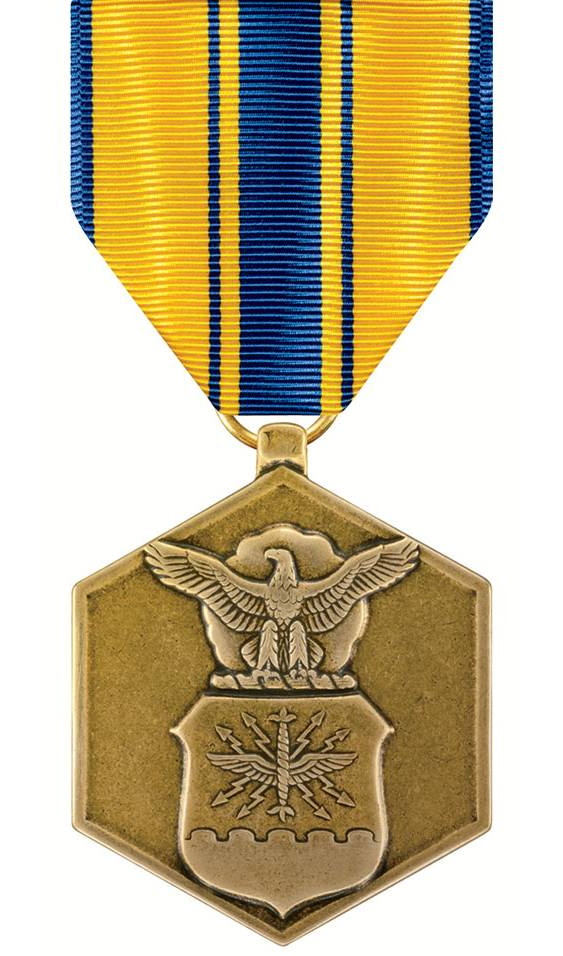
Air Force Commendation Medal. It represents the recognition by my superiors of my commitment to the unit, wing, command, and US Air Force that I displayed during my four years at Altus AFB, OK.
Which individual(s) from your time in the military stand out as having the most positive impact on you and why?
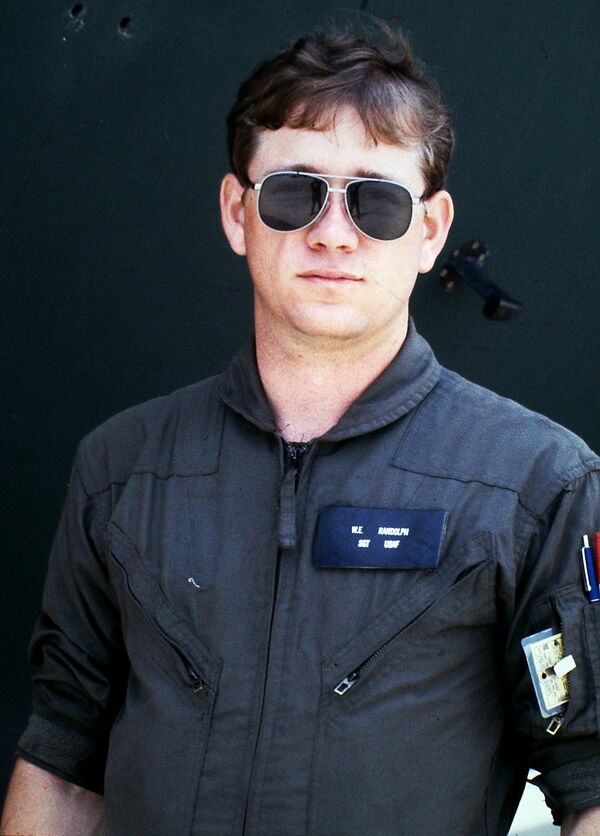
TSGT Zane Winters. As an Aircraft Inspector in QA, he was always objective in his evaluations and inspection of work I had completed. His encouragement led me to apply for and be selected by the QA Branch to become an aircraft inspector. I modeled my approach to the job after TSGT Winters. I used an instructive approach with the younger airmen, like he did, in conducting personnel evaluations.
List the names of old friends you served with, at which locations, and recount what you remember most about them. Indicate those you are already in touch with and those you would like to make contact with.
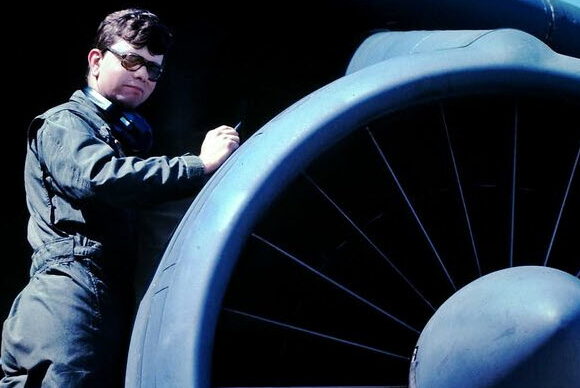
Norton AFB, CA:
John Hawk, Sgt., Tucson, AZ: John was a crew chief with another flight. We met at the base pool and became friends. John enlisted the year before me. He was in college when a draft notice arrived in his mailbox. He opted to enlist in the Air Force.
Al Call, Sgt., Hemet, CA: My barracks roommate. He was in the 780-shop responsible for configuring the cargo bay of C-141A aircraft. It included configuring troop seats, installing stanchions for center line troop seats, installing comfort pallets, and triple airline seats. Etc.
Lance Kuwabara, Sgt., Honolulu, HI: Lance grew up in Kailua on Oahu, HI. Like me, he grew up at the beach surfing and swimming. He was of Japanese-Hawaiian descent. We worked in the same A-Flight truck, and we became friends.
William Vest, SSgt., Los Angeles, CA. Bill and I shared quarters when deployed on Brave Shield at Eglin AFB, FL. Bill was the first person I met at Altus Air Force Base in March 1983. I was checking into billeting to secure a room. As I was registering, I heard a recognizable voice behind me. I turned around and there was Bill. He was now serving as a Flight Engineer Instructor on C-141B aircraft.
John Allen, TSgt., New York. John was an SSgt. When I first met him. He was our A-Flight shift supervisor.
Donald Lock, Sgt. Don was raised in California. He and I were deployed to Japan together for Global Shield and Red Flag at Nellis Air Force Base.
My Nebraska connections were Sgt. Dale Morford, Sgt. Robert Hill and Sgt. Donald Mass. All three enlisted together. They all attended technical school with me and were given orders to Norton AFB, where we served in the 1st Squadron
Altus AFB, OK:
Glen Parker, Sgt., Rockford, IL. Glen, like me, had reenlisted after a break in service.
Brian Kuhn, SRA, New Richmond, WS. Brian was assigned to the same Maintenance Team as me. We’ve reconnected a few times.
Mike Thomas, SRA, Montgomery, AL. Mike and I worked on the same Maintenance Team. We had the same southern genes and couldn’t survive without Sweet Tea and Grits. We reconnected a few times.
Can you recount a particular incident from your service that may or may not have been funny at the time but still makes you laugh?

The barracks at Norton Air Force Base had three floors. The second and third floors had two larger rooms. Typically, NCOs were assigned these two rooms. Sgt. Al Call and I shared the larger room on the second floor. I came home one evening to find a baby grand piano in the room. It seems Al had a goal of learning to play the piano and thought this would be the best solution. He rented the piano, and it was delivered. They set it up while I was out. Needless to say, it became the talk of the barracks. The only person who ever really played it was an airman who was assigned to his shop, who already knew how to play. Six months later, the piano was gone.
What profession did you follow after your military service, and what are you doing now? If you are currently serving, what is your present occupational specialty?
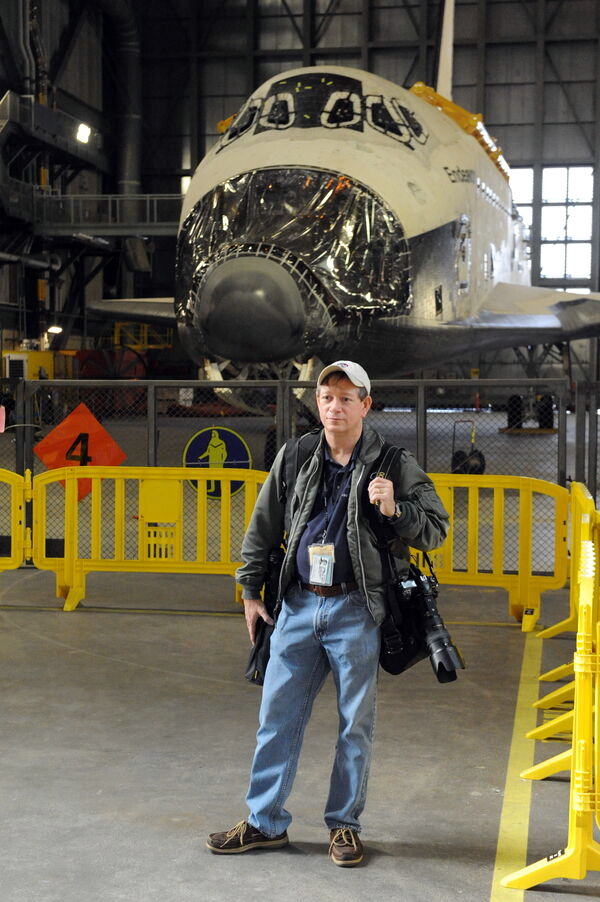
After my honorable discharge in 1987, I moved to Dayton, OH, where a good friend from Melbourne was stationed. Rockwell International hired me as a Technical Editor for the B-1 Bomber and OV-10 Bronco programs in Columbus, Ohio. Rockwell was in its final stages of delivering 100 B-1 Bombers to the Air Force. The OV-10 was being upgraded for the Marines. It was an opportunity to utilize my Journalism degree and Air Force knowledge of technical publications simultaneously. I was responsible for collaborating with both technical writers and graphic artists on the first drafts of technical manuals. I was then responsible for the final editing of the technical documents for both aircraft. Additionally, I worked on the internal company newsletter for the Columbus factory. I had also joined the Air Force Reserves at Wright-Patterson Air Force Base—specifically, the 906th Tactical Fighter Group, which was flying F-4 Phantoms at the time.
In 1988, I returned to Florida and began working for a multidisciplinary civil engineering firm in Orlando, Florida, where I was able to utilize my degrees in Journalism and an MA in Business. The firm designed roadways and bridges, water distribution and treatment systems, and wastewater collection and treatment systems. The private sector provided land planning and site design services for subdivisions, multi-family housing, high-rise office buildings, theme parks, and retail centers. My Marketing/Business Development role involved researching and tracking potential projects, connecting with clients to gather key information, and preparing and submitting formal written proposals, often under tight deadlines. Part of my job was writing technical information so layman (public officials) could understand it. Once the firm was shortlisted, I led the development and preparation of formal presentations to be presented to governmental selection committees. Other duties I enjoyed were providing public relations for the various projects, such as ground-breaking ceremonies and ribbon cuttings. I utilized my photography skills to document different aspects of completed projects. It involved aerial photography from rotor and fixed-wing aircraft. During my 10 years with Professional Engineering Consultants (PEC), I wrote over 1,000 proposals and prepared more than 400 presentations.
I left there to assist in operating a Landscape Architecture Consulting firm (JCR Consulting), which my wife started. As a licensed Landscape Architect in Florida, she needed someone to complete both the marketing efforts and the business administration side. The firm was established in 1993 and has been successfully operating for over 32 years. Our firm has completed several high-profile landscape design projects, including the Orlando International Airport, the new Dr. Phillips Performing Arts Center in Orlando, the George C. Young Federal Courthouse, and various Streetscape projects for the Florida Department of Transportation. Under one contract, the firm served as the “District Landscape Architect” for the 600-plus-mile Florida Turnpike System.
In 2005, NASA was preparing for “Return to Flight” with Mission STS-114. After STS-107, Columbia was lost in February 2003; the agency ceased launches until it could determine the cause and rectify the problems. The first launch was overwhelming for the Public Affairs Office (PAO), which had a small staff. About 4,500 media representatives requested credentials to attend. The PAO requested support from members of the Florida Public Relations Association (FPRA). Having grown up part of my life on the Space Coast and watching Apollo 11 launch, I jumped at the chance to assist.
What was supposed to be a one-time effort turned into a nine-year role as a volunteer Media Coordinator, supporting the final 23 shuttle launches and assisting with United Launch Alliance and SpaceX Launches. I attribute the success of this opportunity to my eight years on active duty in the Air Force. Some of the PAO staff were concerned that the volunteers would be a burden due to their lack of knowledge about the Space Shuttle. I believe after the first launch, they saw my commitment to the mission and my ability to work on complex issues. It was reinforced once they knew I was a former Air Force officer with a technical background. My role consisted of a multitude of tasks: issuing media credentials to the press, escorting domestic and international media to secure locations within Kennedy Space Center (KSC) such as Launch Pads 39A and 39B, Vehicle Assembly Building (VAB), Shuttle Landing Facility (SLCheckoutkoutons & Checkout Building (O&C) and remote photography sites; coordinating Astronaut Interviews with local and national media outlets covering the launches; answering phones and referring the media to the PAOs with specific technical knowledge; monitoring the press site during launch to ensure the countdown clock face was clear of crowds. When the full-time PAO and FPRA member went on Maternity Leave, they asked me if I would step in and manage the effort.
Serving with NASA PAO was similar to the Air Force. The unexpected was always lurking around the corner. The workload building up to launch day was busy with various events. Press Conferences, demonstrations of mission-related equipment for the media, escorting astronauts to interviews, and keeping the media corralled at the press site kept us on our toes. Launch delays (scrubs) were part of the effort. Sometimes the delay would be a day, and at other times, it would be weeks or months. It was exciting to be part of the shuttle’s history; the reward was meeting not only the astronauts but also retired NASA employees from the Mercury, Gemini, and Apollo programs. During several missions, I sat with Jack King, the voice of Apollo, Hugh Harris, the voice of the first shuttle launches, and Chief Norris Gray, who helped establish KSC and tested much of the equipment. I worked alongside Bill Wilson, an Air Force veteran and former head of KSC Voice Communications. I was able to photograph every launch from a distance of 3.5 miles away. I photographed launches from the Press Site and the top of the Vehicle Assembly Building (VAB). Finally, I was part of the sendoff when both Endeavour and Discovery were lifted and loaded onto the SCS (Boeing 747) and flown to their new homes in Los Angeles and Virginia. I witnessed the entire trip of Atlantis to its new home at the Kennedy Space Center Visitor’s Center. Before Atlantis was closed up, I was invited to climb into the cockpit and middeck, where I sat in the commander’s seat and signed the white room wall. I gained a new respect for the shuttle crews who live and work in such a small environment.
I have served on several professional association boards, city advisory boards, and non-profit boards. In 2005, I was awarded Volunteer Citizen of the Year by the city of Maitland, FL. In 2019, Florida Audubon-Center for Birds of Prey presented me with a “Lifetime Achievement” award. In “023, the Society of Marketing Professional Services, Central Florida, recognized me with the “Hall of Fame” award for contributions to the profession. As a representative for the City of Maitland, I’ve attended state legislative meetings in Tallahassee to lobby for city issues. I also served on the MetroPlan Community Advisory Committee, examining regional transportation needs.
Today, I sit on the Maitland City Council in Seat #4. As an elected official, I am involved in the final decisions regarding budgets, capital improvement projects, and new and updated city ordinances, and I represent the city at regional meetings and events.
What military associations are you a member of, if any? What specific benefits do you derive from your memberships?
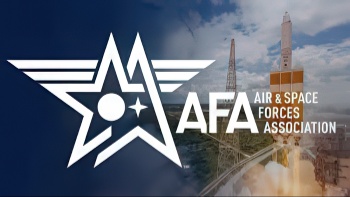
I am a member of the Air & Space Force Association, the US Air Force Museum, a Life Member of the American Legion, and the Commemorative Air Force. As such, I can stay informed about issues facing the Air Force and support its members in a small way.
In what ways has serving in the military influenced the way you have approached your life and your career? What do you miss most about your time in the service?
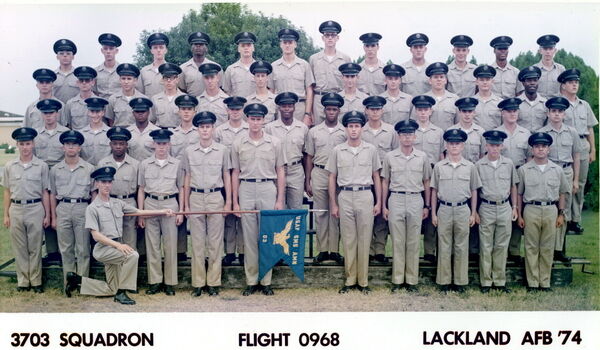
The discipline and ‘Can-Do Attitude’ that I learned from my father and the Air Force have sustained me throughout my civilian life. The ability to work on multiple complex issues and maintain high standards in completing tasks has guided me through my chosen profession. Much of how I organize work and complete elements is based on the structure provided by the Air Force technical manuals.
I miss the tight-knit community. When I entered college, I was asked what fraternity I planned to pledge. I replied that I was just in one of the largest fraternities: the US Air Force. To randomly gather a group of people in a different environment, far from home, and manage to create a cohesive unit is a substantial feat. The common goal or mission in the military is much more pronounced than in civilian life. Today, when I come across any military veteran, I notice a commonality in their lives. It doesn’t matter the branch, and yes, there is friendly bantering back and forth, but overall, we all went through a similar experience that remains with us for our entire lives.
Based on your own experiences, what advice would you give to those who have recently joined the Air Force?

Take pride in your career field by working hard to learn everything about your specific job. Volunteer and take an active role in your squadron leadership opportunities. Attend PME courses when available. Sit on advisory councils and begin taking college classes in your spare time if the opportunity is provided.
In what ways has TogetherWeServed.com helped you remember your military service and the friends you served with?
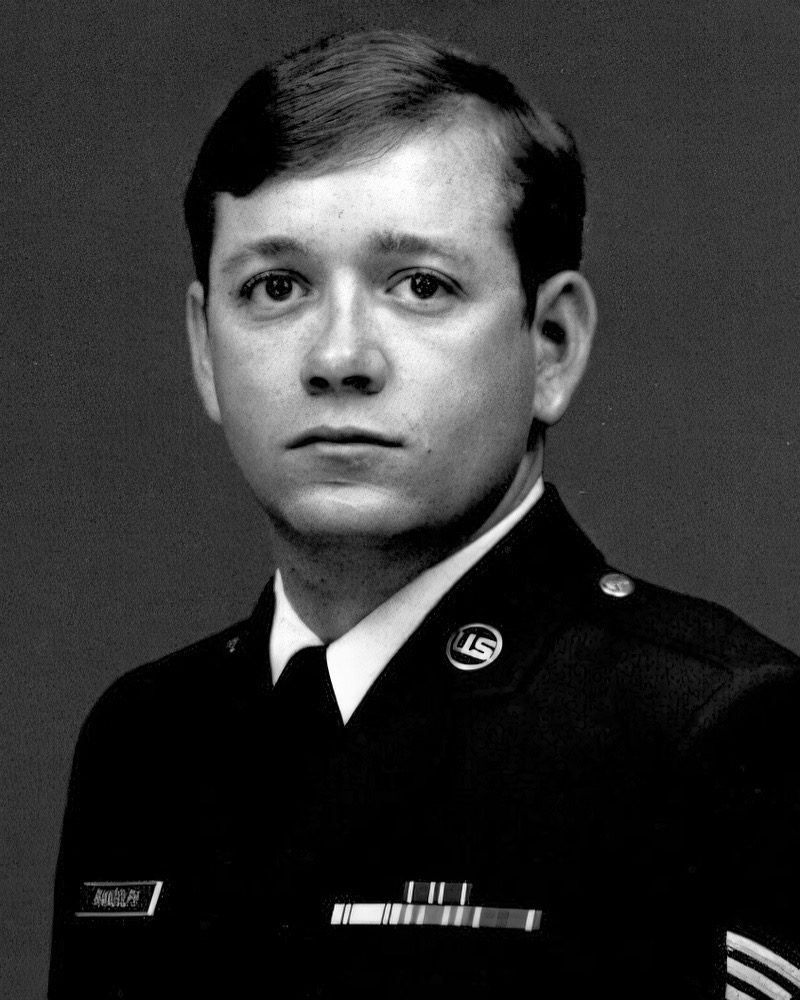
The thought-provoking questions have been instrumental in organizing my thoughts and recalling my military career. It makes me acknowledge to myself the contribution, however small, I made while serving my country. As I read through other profiles, it resonates with me that the synergy created by all the service members working together to create the greatest Air Force in the world is remarkable.
PRESERVE YOUR OWN SERVICE MEMORIES!
Boot Camp, Units, Combat Operations
Join Togetherweserved.com to Create a Legacy of Your Service
U.S. Marine Corps, U.S. Navy, U.S. Air Force, U.S. Army, U.S. Coast Guard

0 Comments